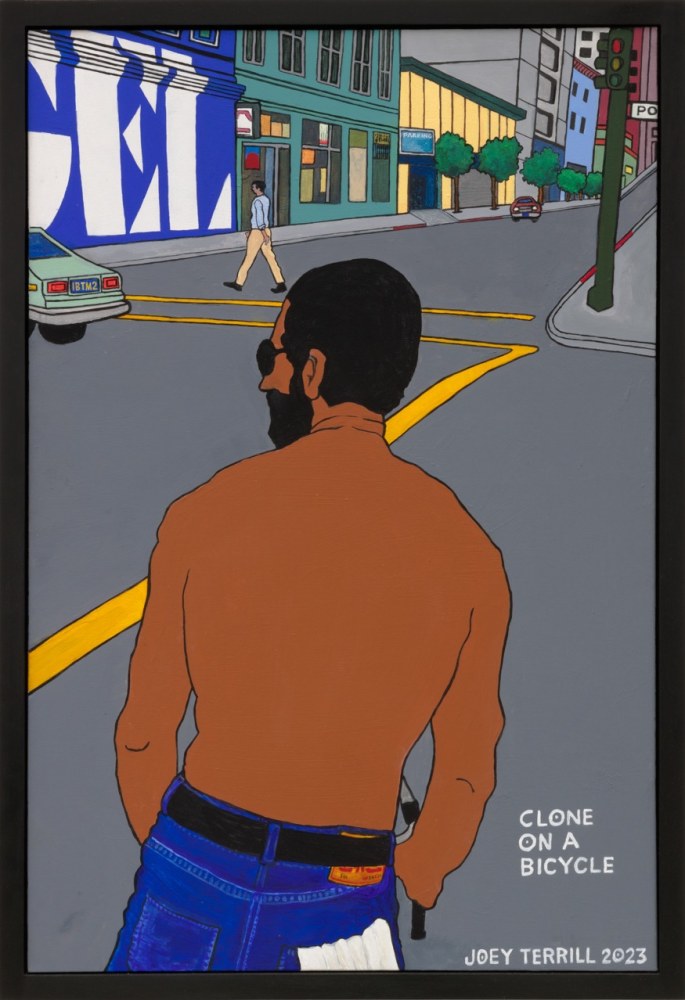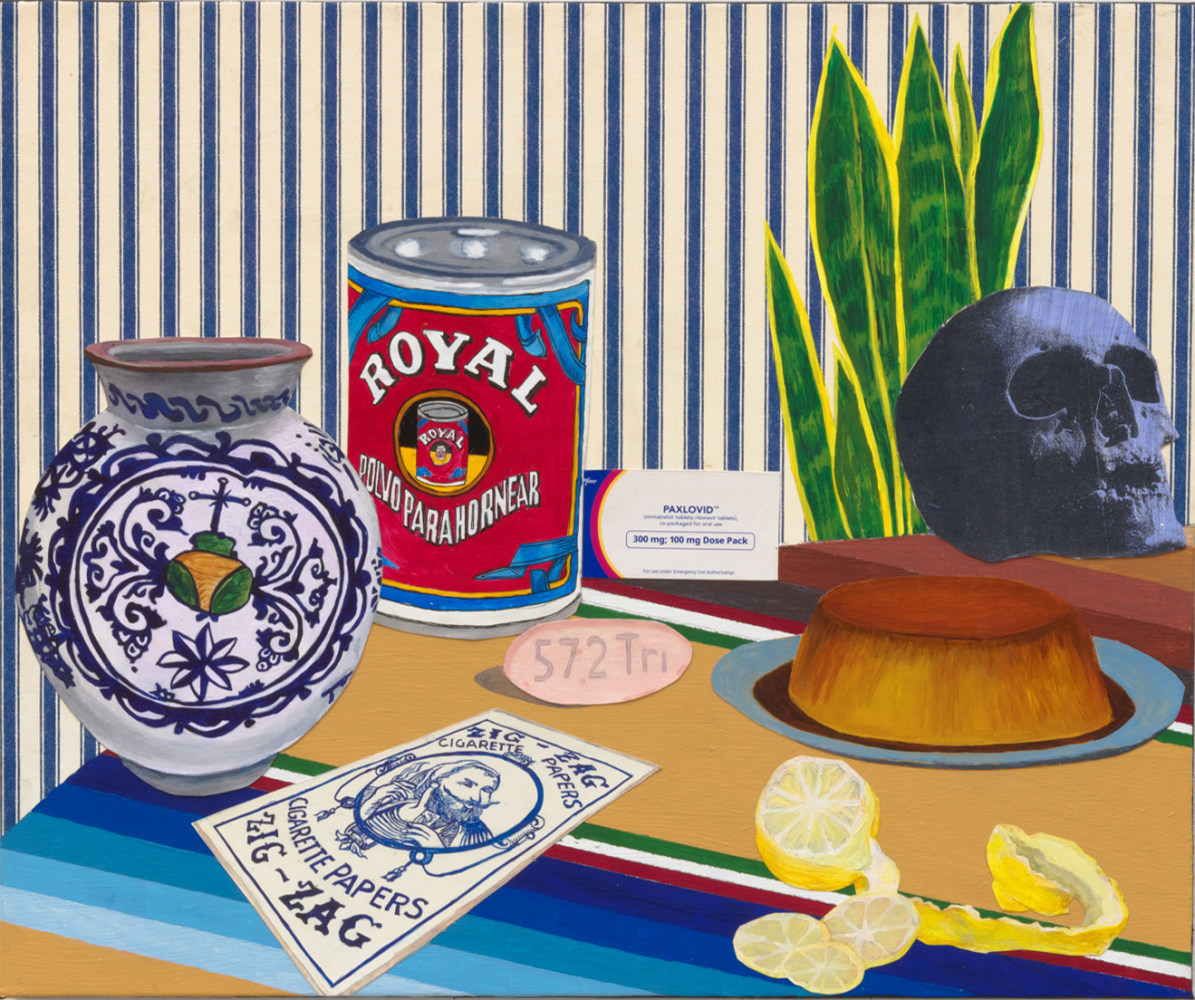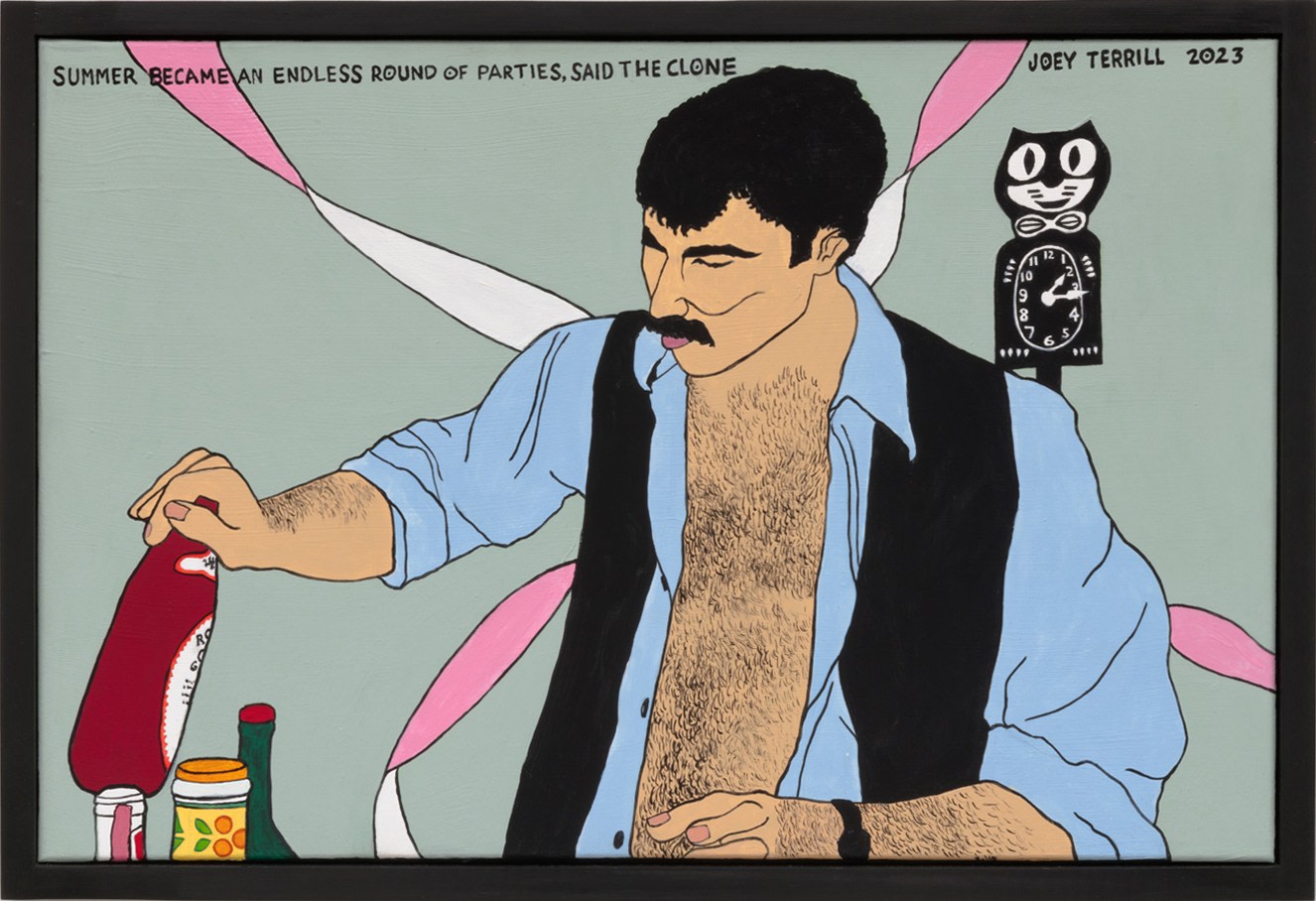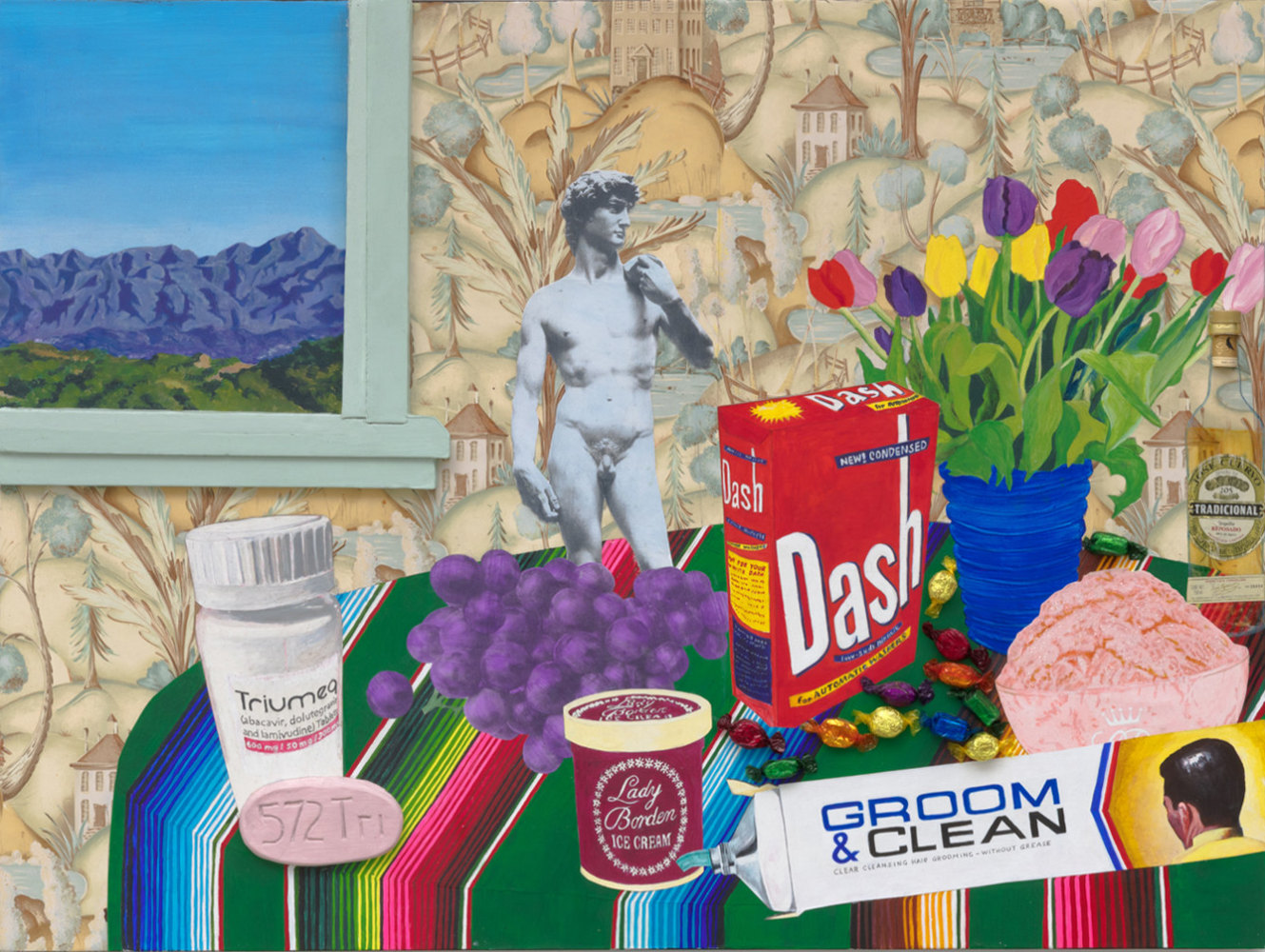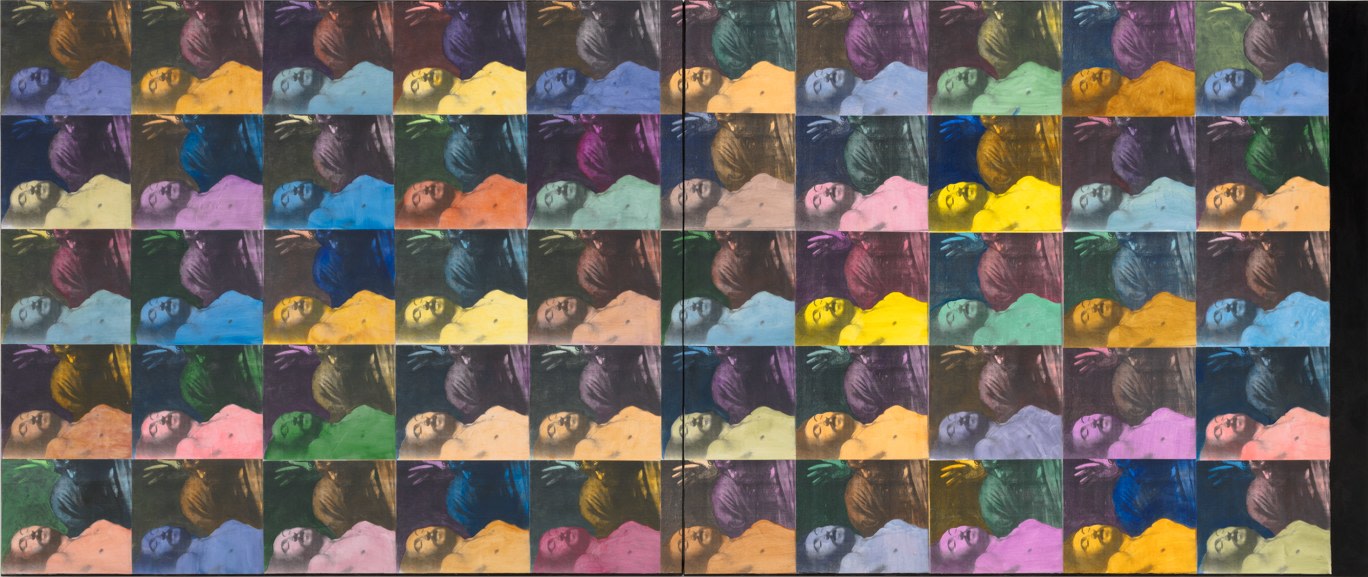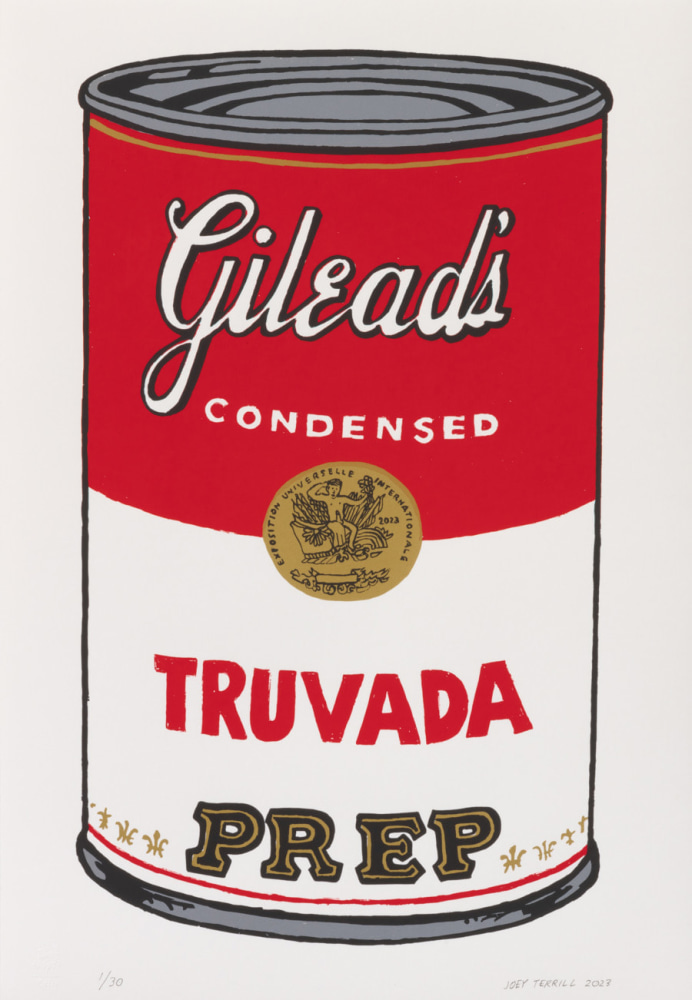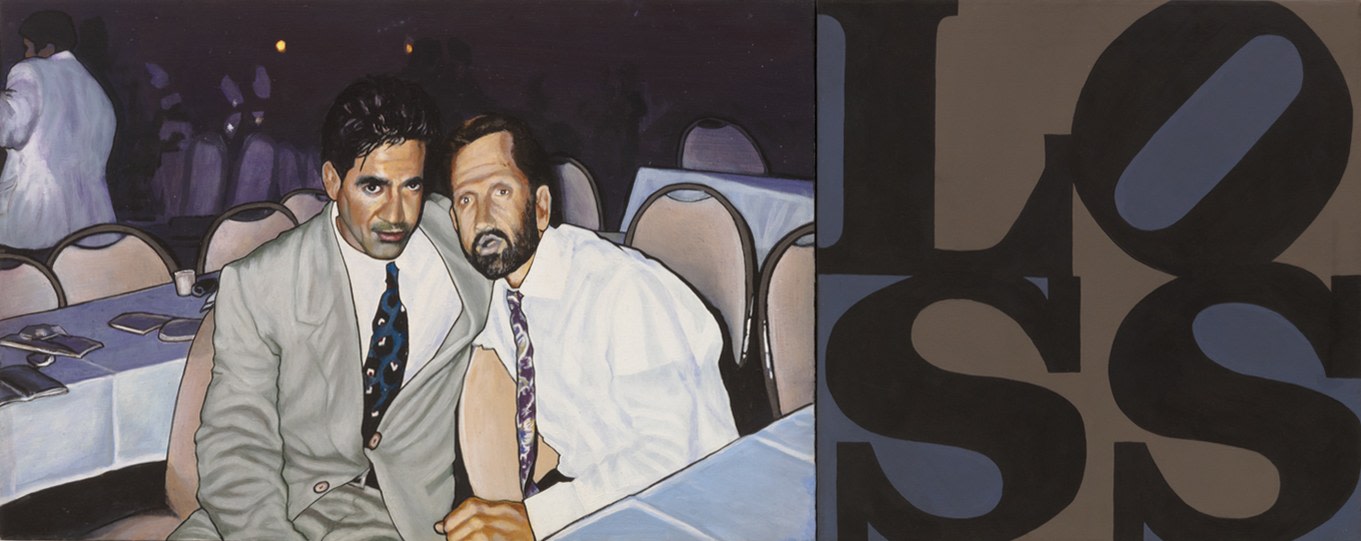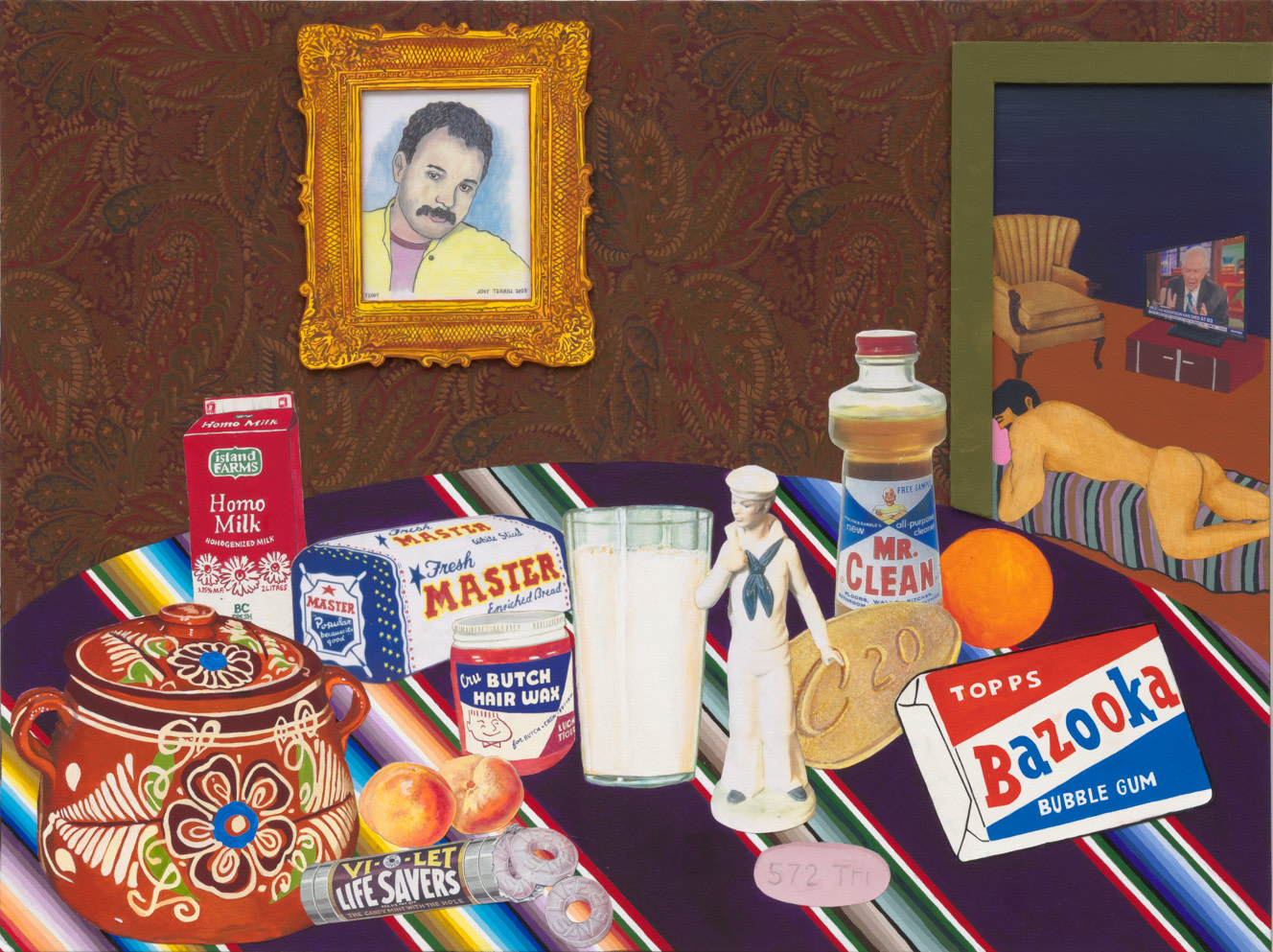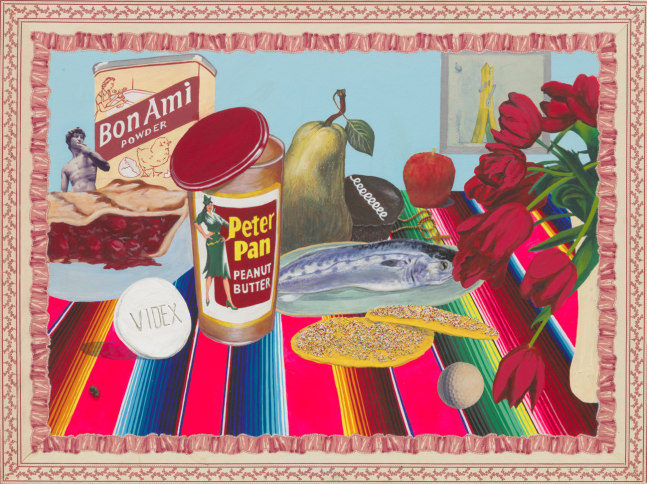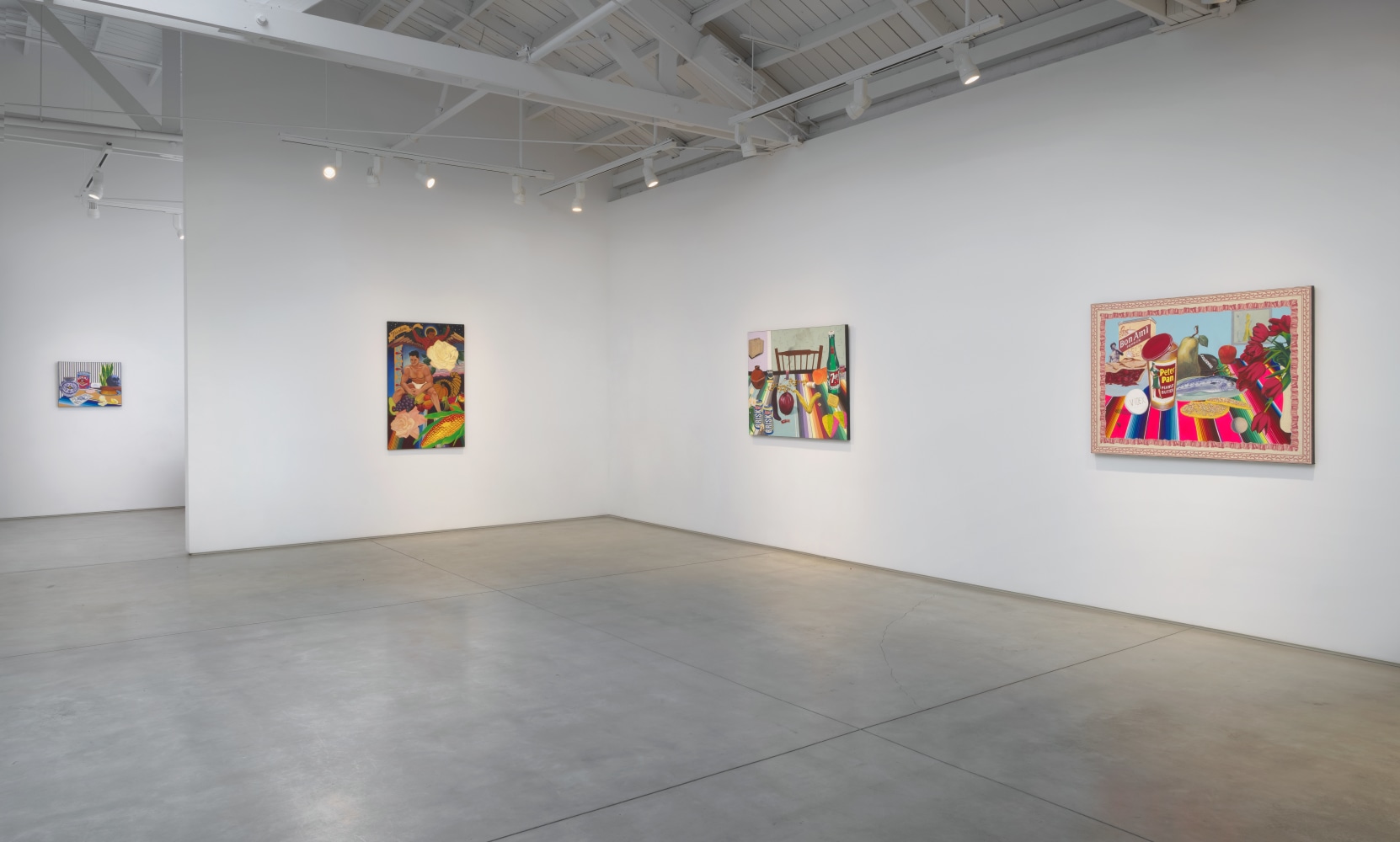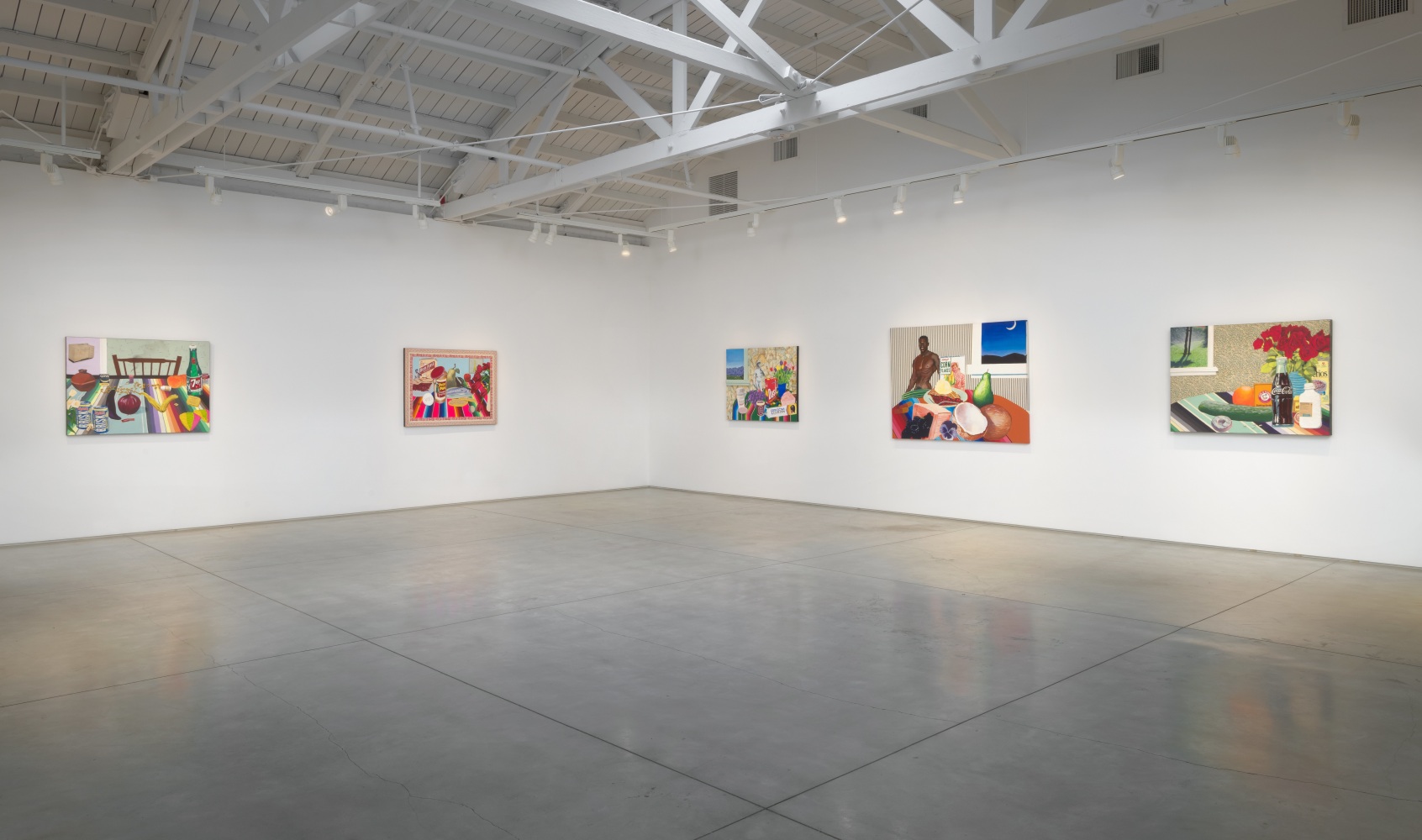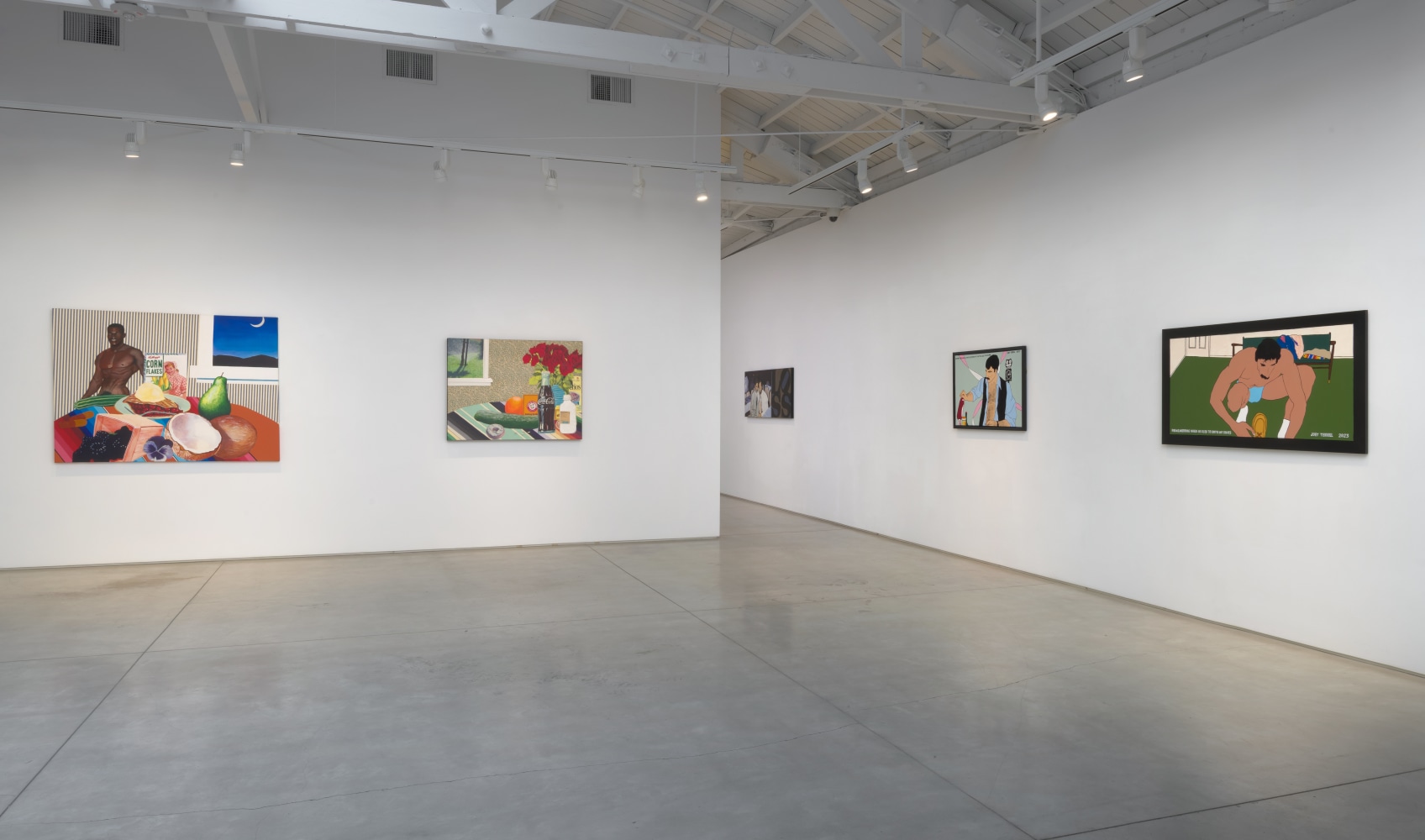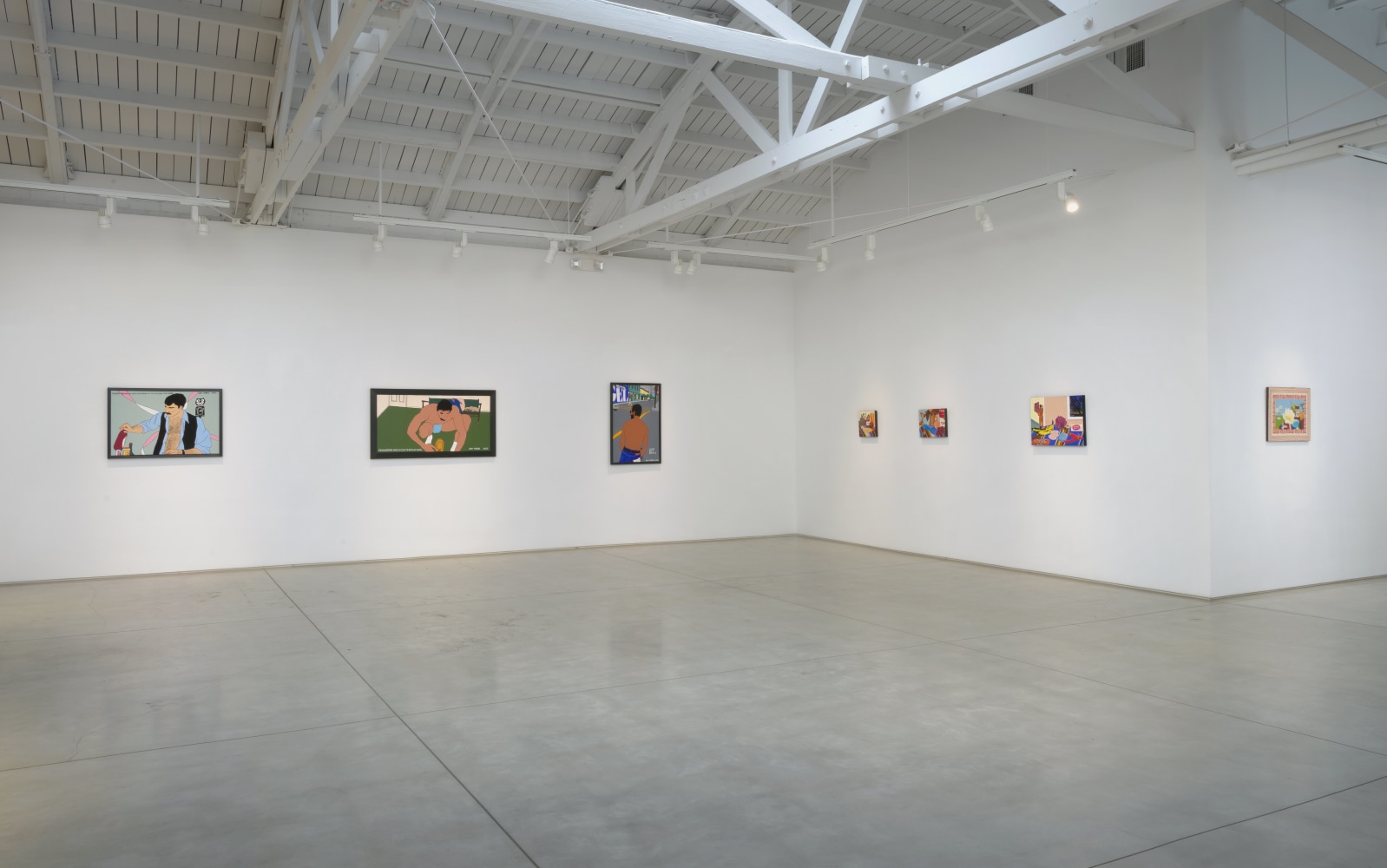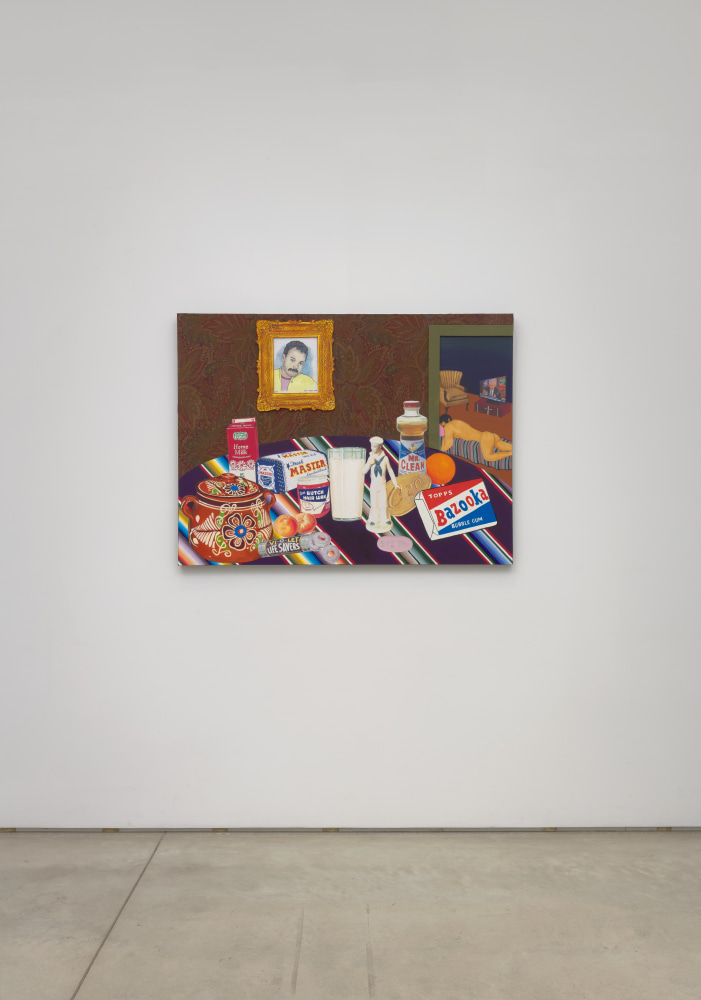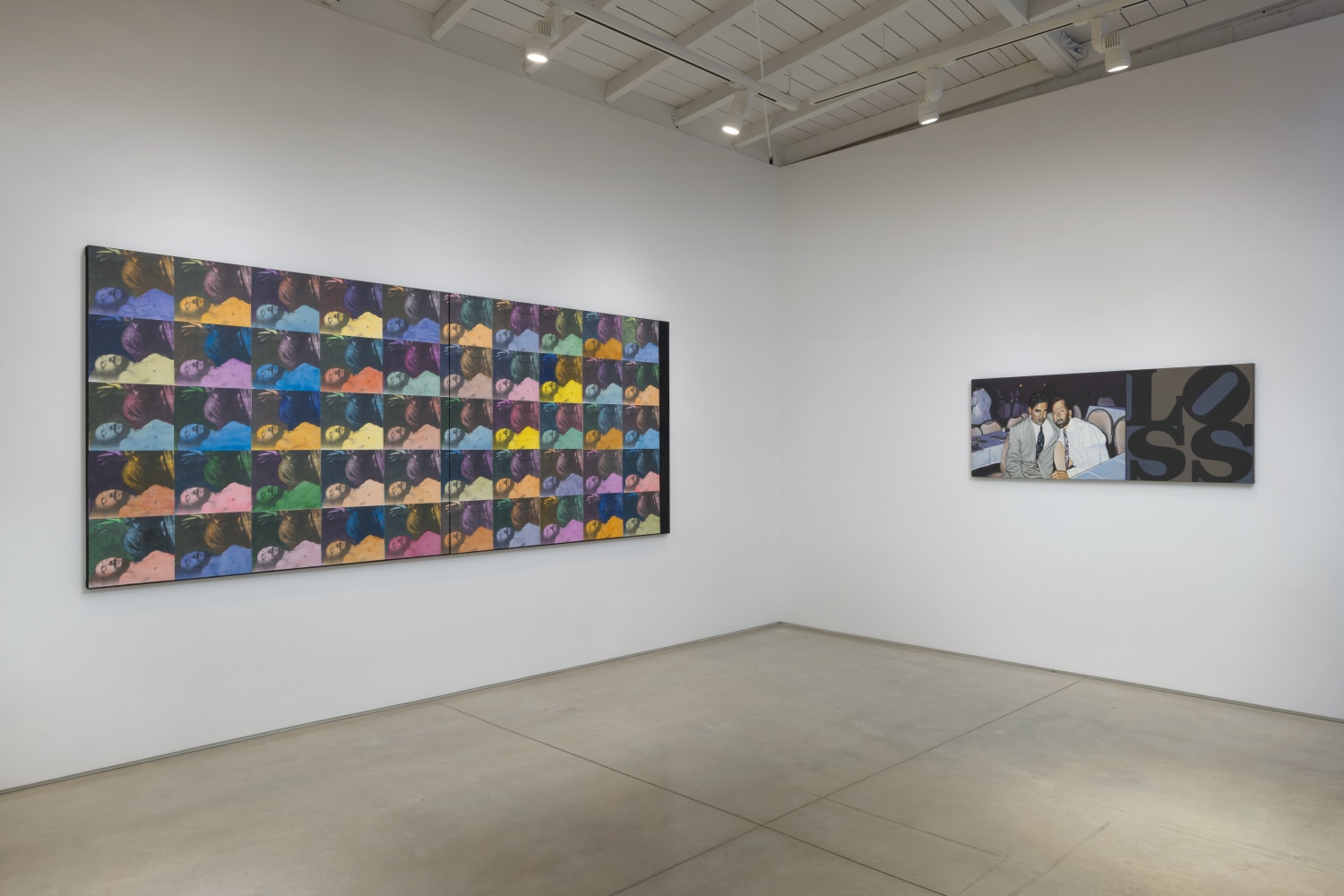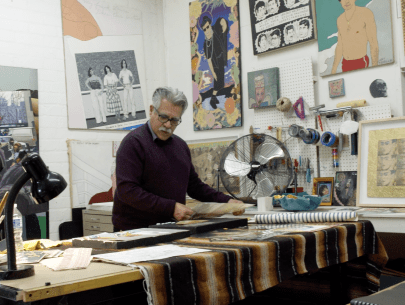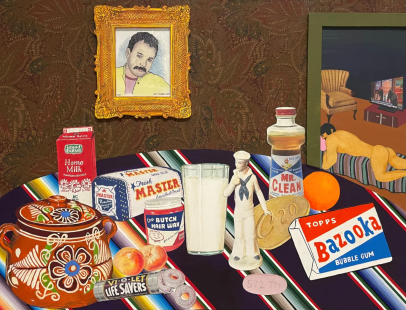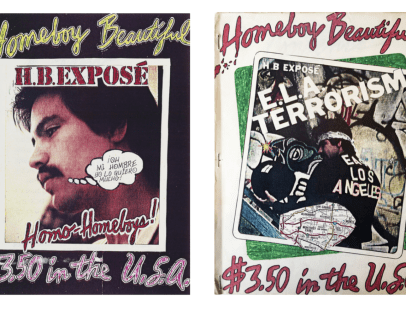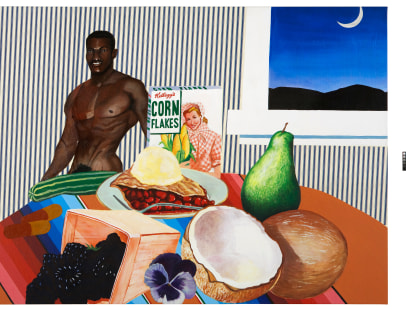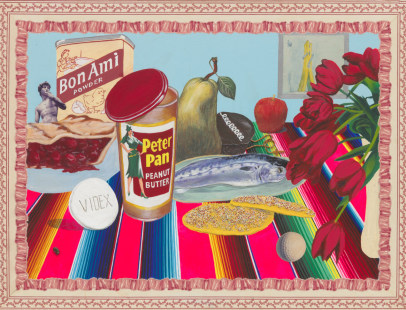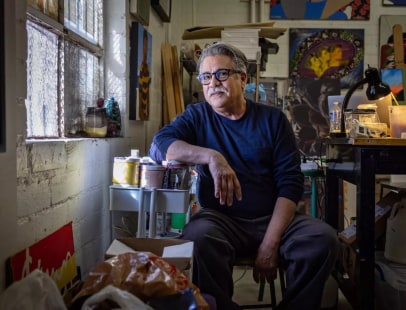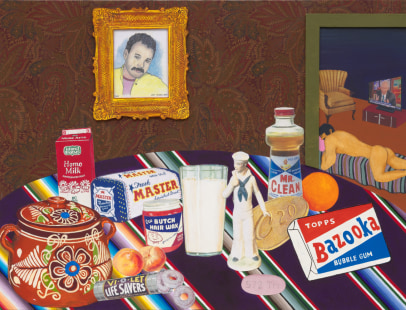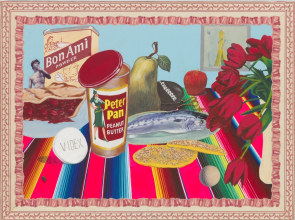
Marc Selwyn Fine Art is pleased to present Joey Terrill: Still Here the gallery’s first exhibition of work by the artist.
As an openly gay Chicano, Joey Terrill’s career as an artist has run parallel to his evolution as a social justice advocate. Employing the bold color and charismatic aesthetics of advertising and comics, Terrill has addressed the politics of sexual identity, the media’s lack of representation of the Chicano community and the extraordinary losses suffered during the AIDS crisis. Though the narratives depicted are autobiographical – a dose of Videx rests on the breakfast table alongside a jar of Peter Pan peanut butter - Terrill’s use of familiar household objects allows the work to remain effortlessly inclusive. Who doesn’t understand the great pleasure of breakfast or the tyranny of a daily medication?
Joey Terrill was born in 1955 and is a second-generation native of East Los Angeles, a region central to Chicano life, art and culture in the United States. He attended Cathedral High School where he became involved with La Huelga and helped with the Caesar Chavez-led grape and lettuce boycott. During this time, he became aware of Sister Corita Kent, a longstanding faculty member of the Immaculate Heart College art department, who championed progressive, socially conscious artworks made with a pop sensibility. This stance corresponded with Terrill’s ambitions, and he enrolled there in 1973.
As a student, he immersed himself in the burgeoning Chicano civil rights movement while exploring “hidden” networks of queer creatives (Gronk, Cyclona, Mundo Meza and, a frequent collaborator, Teddy Sandoval among others). Buoyed by a newfound sense of community, Terrill began a practice based on his life experiences, and by the mid to late 1970s, he was confronting homophobia and racial stereotyping in his artwork. In his Maricon Series, an iconic group of photos created with Sandoval, friends were depicted wearing t-shirts emblazoned with the derogatory slurs Maricon and Malflora. This was followed in 1978 and 1979 by the creation of Homeboy Beautiful. This zine, produced in an edition of 100, was conceived as an artwork in magazine format. Friends were recruited to pose for extravagant faux beauty makeovers. Homeboy Beautiful also included exposés and fashion spreads, one of which is among the earliest publications featuring transgender Latina models. In it, a reporter (Terrill) covered underground homo-homeboy get-togethers featuring uninhibited socializing set to Judy Garland songs. Sensational images were presented with the same simplistic good cheer as those found in Better Homes and Gardens. While there was not a scripted narrative, Terrill employed an impeccable editor’s eye to shape his intended parody. The magazine’s provocative marrying of text, image and keenly observed cultural and personal detail established a template for the artist’s subsequent bodies of work. In 2017, when the zine was included in the Getty’s Pacific Standard Time: LA/LA, Homeboy Beautiful along with other works by the artist, was met with an acceptance and acclaim not possible in the 1970s.
Organized in collaboration with Rafael Barrientos Martínez, this exhibition will highlight the artist’s ongoing still-life series, never before seen as a group. Begun in the late 1990s and informed by pop icon Tom Wesselman’s sly commentary on consumerism in the 1960s, Terrill employs a conventional composition to address the everyday reality of his shared Chicano lifestyle as well as his experience with HIV which he contracted in 1980 while living in New York. Sustiva and assorted HIV prescription cocktails are depicted along with cans of Brisk Lipton Tea and bouquets of roses atop a Mexican serape tablecloth. Painted with the artist’s trademark bright pop colors and a flat, collage-like technique, each work memorializes what it is to live with a treatable but still incurable life-threatening illness.
Similarly, Terrill’s suite of soup can prints entitled Prep Can (a reference to the medication Truvada used both to treat and prevent HIV) draws a parallel between Warhol’s critique of American consumer culture in the 1960s and the present-day corporate pharmaceutical industry. Also included in this presentation are several of the artist’s larger scaled canvases completed earlier this year. The paintings’ titles say it all: Remembering When He Used to Untie My Shoes; Summer Became an Endless Round of Parties, Said the Clone; Still-life with Triumeq and Wrapped Candies that Remind Me of the Artist Félix González-Torres. Throughout his career and in all the mediums he employs, Terrill’s work is an unabashedly personal representation of his community with inclusive pop culture references in abundance.
Joey Terrill attended Immaculate Heart College and California State University, Los Angeles. His work has been presented in solo exhibitions at Ortuzar Projects, New York; Park View / Paul Soto, Los Angeles; ONE Gallery, West Hollywood; Norris Fine Art Gallery, Los Angeles; Score Bar, Los Angeles; and Windows on White Street, New York. His work has been featured in the institutional surveys ESTAMOS BIEN–La Trienal 20/21, El Museo Del Barrio, New York (2020–2021); Touching History: Stonewall 50, Palm Springs Art Museum, Palm Springs (2019–2020); Through Positive Eyes, Fowler Museum, University of California, Los Angeles (2019); Axis Mundo: Queer Networks in Chicano L.A., a partnership between Museum of Contemporary Art and the Getty Museum’s Pacific Standard Time:LA/LA at the Pacific Design Center and ONE Gallery, Los Angeles; and Asco: Elite of the Obscure, A Retrospective, 1972–1987, Los Angeles County Museum of Art (2011). His work is included in the permanent collections of the Museum of Modern Art, New York; Whitney Museum of American Art, New York; El Museo del Barrio, New York; Hammer Museum, Los Angeles; Museum of Contemporary Art, Los Angeles; Museum of Contemporary Art, San Diego; Williams College Museum of Art, Williamstown, Massachusetts; and Art Institute of Chicago. His painting, Painted by Her Brother, 1983 is one of the lead promotional images for Made in LA: Acts of Living at Los Angeles’ Hammer Museum. His work can also be viewed in Copy Machine Manifestos: Artists Who Make Zines, at the Brooklyn Museum through January 2024. Joey Terrill: Still Here, the first monograph devoted to his AIDs-related works, will be released in January 2024.
Acknowledged for his enduring AIDS activism, Terrill recently retired as the Director of Global Advocacy and Partnerships for the AIDS Healthcare Foundation. He lives and work in Los Angeles.


